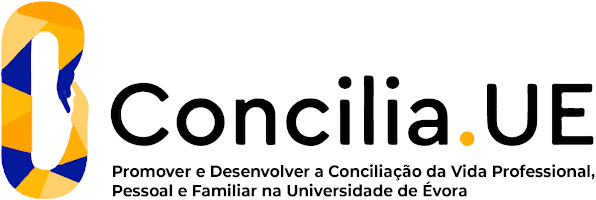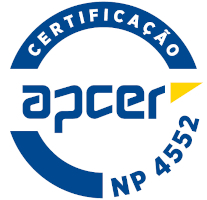PRIMÁRT_Portugal Rediscovering Mural ART: Historical and Scientific study of Evora Archiespiscopal (1516-1615)
- Universidade de Évora(líder)
- Direcção Regional de Cultura do Alentejo(parceiro)
- Universidade de Lisboa - Faculdade de Letras(parceiro)
- Universidade de Lisboa - Fundação da Faculdade de Ciências(parceiro)
Summary
Since the first quarter of the sixteenth century until the early seventeenth centuries, the best Portuguese and European Masters have passed in Évora, combining the values of the Renaissance, and the tradition of Christian spirituality. Their presence promoted by the permanence of the Royal court in the city, launched bases for the development of Art knowledge and the arts regionally and nationally. Figures such as the Flemish painter of oil and fresco Francisco Campos (1550-1580), French sculptor Nicholas Chanterenne (1470-1551) and Eborense writer André de Resende (1500-1573) marked the apogee of artistic and cultural city.
During this period Evora was several times, first with D. Manuel (1495-1521) in the golden environment of the Portuguese Discoveries, followed by D. João III (1521-1557) who made it the political and cultural capital of the kingdom, and the heart of international diplomacy, from where the monarch managed throughout the empire. The universal symbolism of the city represented a strong upward even during Spanish rule, when the advent of the Council of Trent, imposing new guidelines for the Arts in the transition from Mannerism to the refurbished.
The starting point of this project coincides with the publication of Cancioneiro Geral of Andre de Resende (1516). This inspired a literary work of wall paintings most representative of Eborense nucleus - The Painted House of Vasco da Gama (c.1520). The terminus of the project coincides with the date of publication (1615) treated the Art of Painting Filipe Nunes which marks the Portuguese artistic context in the first half of the seventeenth century.
The stylistic~, technical and material corpus of the easel painters of the Eborense nucleus has been studied as well as the artists who worked in other nucleus that radiated from Évora (as Montemor-o-Novo and Vila Viçosa). The same analysis intends to be carried out by the present project for the mural painters of the region (many of them unknown), considering that it was during this period that the mural reached its maximum splendor. It is important to assess the extent to which artists were influenced by the cultural environment of Évora, performing compositions of classic and humanist nature or others, breaking up with the external novels.
The problem increases when assessing the technical and material aspects of these paintings. To what extent the painters followed the practice of buon fresco, emphasized by theorists of art, like the Portuguese Francisco de Holanda after living with Michelangelo in Rome (1541)? Or had the artists seized and reinterpreted these guidelines in light of their personal experience
It is important to identify contact points between mural and easel painting at the level of formal elements and building compositions, the use of materials and colour palette setting, in order to clarify authorship. To this end, the project combines documentary and bibliographic data to the results of a wide range of techniques for surface analysis and materials characterization.
The scientific examination of the paintings becomes crucial, especially in cases where no documentation exists. The absence of paintings signed or dated, has led to assignments based on stylistic analyzes, unreliable, so that scientific tests will be an asset. The (re)defining of the corpus of the mural painting in Évora, the workshops and relations with other Portuguese and Europeans art centers is a more relevant question to which the project will contribute decisively.
The research plan consists of three approaches:
• Research of History and Art History with collecting and evaluating documentation, its integration into the results of material characterization and surface, allowing a critical analysis of the art works and its context with the mentality of the time;
• surface analysis of the paintings through the detailed examination by visible and raking light photography, macro photograph of fluorescence UV and IR. This methodology will provide data on the execution techniques and assessing conservation status of the colour palette;
• combining characterization techniques for in situ material analysis (X-ray fluorescence Spectrometry and visible Spectro-photometry) with laboratory analytical techniques (micro-Raman, FTIR and GC-MS) and microscopic techniques (dark-field microscopy and scanning electron microscopy) that allow information about the pictorial materials and their possible origins.
This project is based on the synergy of a strong collaboration between HERCULES laboratory, History Department (University of Évora), the Department of Art History, Faculty of Humanities and Centre for Atomic Physics of the University of Lisbon and the Regional Department of Culture of Alentejo, integrating a Portuguese and foreign multidisciplinary team, with appropriate expertise to analyze the results and promote their dissemination, nationally and international, over three years.
Goals, activities and expected/achieved results
Project PRIM’ART_Portugal Rediscovering Mural ART: Historical and Scientific Study of Evora Archiepiscopal (1516-1615) ( website: www.hercules.uevora.pt/PRIMART)
Mural paintings were one of the most recurrent arts in the Southern Portugal and it has reached its maximum splendor in the 16th and 17th centuries. However, little is still known about the operant modus of its performers. Knowledge of the raw materials and paintings techniques used to execute wall paintings is essential in the fields of history of art and for proper conservation projects. Taking these aspects under consideration, the two main goals of projet PRIM’ART were:
-to assess the pictorial praxis in the town of Évora and its ouskirst in the 16th and 17 th c. and to assess the extent to which the painters were influenced by the Évora’s cultural environment, performing compositions of classic and humanist nature or, in other cases, breaking up with external novelties;
-to obtain data about the raw materials and pictorial techniques used to execute the mural paintings. Particularly interesting was to assess to which extent painters followed the practice of buon fresco emphasized by Art theorists, like the Portuguese Francisco de Holanda after his contact with Michelangelo in Rome (1541) or did they seized and reinterpreted these guidelines in light of their personal experience and taste;
Secondary goals
-To identify contact points between mural and easel paintings at the level of formal elements and building compositions, the use of materials and colour palette setting, in order to clarify authorship. To this end, the projet has combined a documentary and bibliographic data of the results of a wide range of techniques for surface analysis and materials characterization;
- the compare the historical, technical and material documentation produced with comparable data from studies on mural paintings from the same chronological period in Portugal and other European countries ( especially Italy).





















